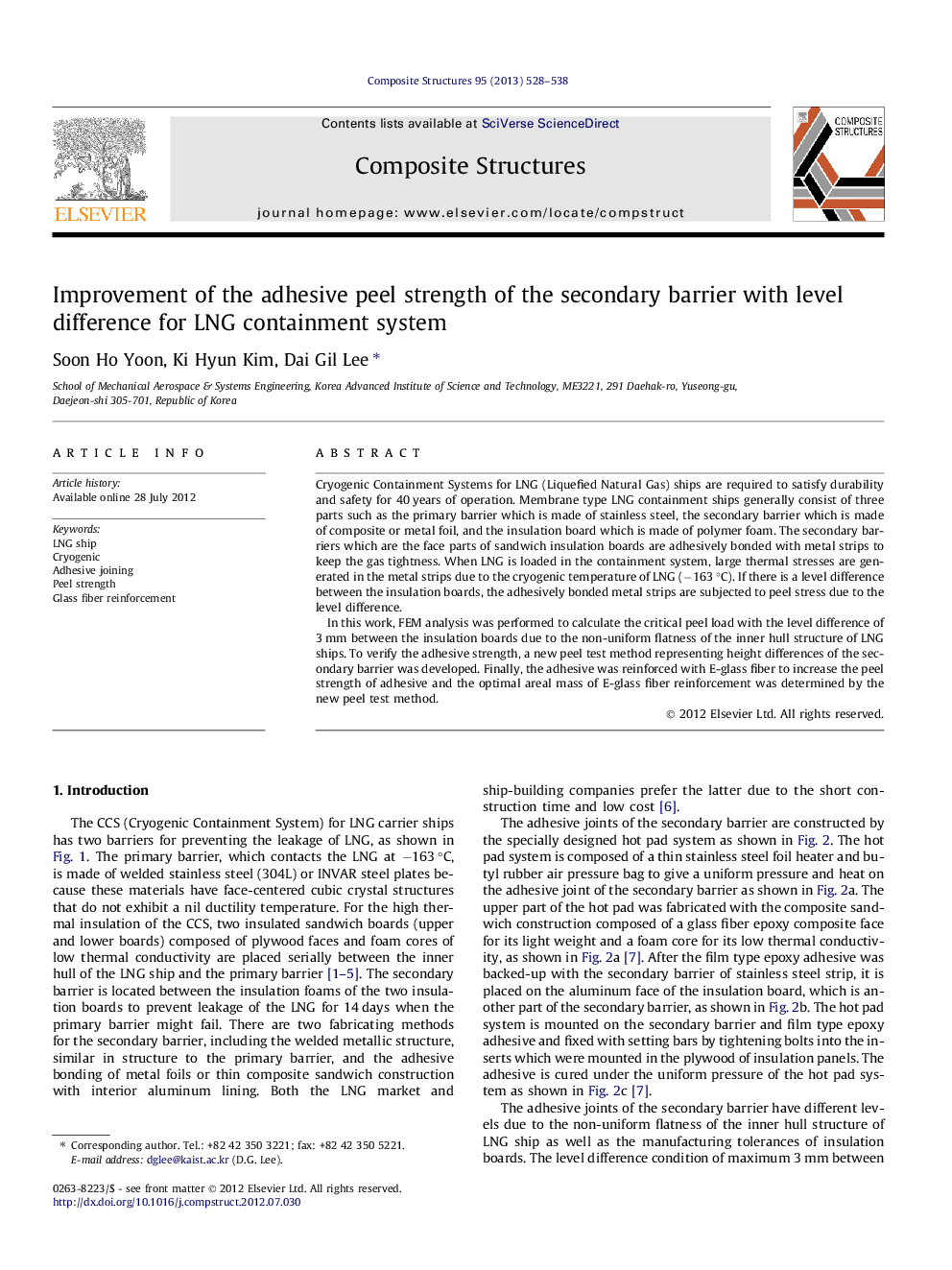| Article ID | Journal | Published Year | Pages | File Type |
|---|---|---|---|---|
| 252182 | Composite Structures | 2013 | 11 Pages |
Cryogenic Containment Systems for LNG (Liquefied Natural Gas) ships are required to satisfy durability and safety for 40 years of operation. Membrane type LNG containment ships generally consist of three parts such as the primary barrier which is made of stainless steel, the secondary barrier which is made of composite or metal foil, and the insulation board which is made of polymer foam. The secondary barriers which are the face parts of sandwich insulation boards are adhesively bonded with metal strips to keep the gas tightness. When LNG is loaded in the containment system, large thermal stresses are generated in the metal strips due to the cryogenic temperature of LNG (−163 °C). If there is a level difference between the insulation boards, the adhesively bonded metal strips are subjected to peel stress due to the level difference.In this work, FEM analysis was performed to calculate the critical peel load with the level difference of 3 mm between the insulation boards due to the non-uniform flatness of the inner hull structure of LNG ships. To verify the adhesive strength, a new peel test method representing height differences of the secondary barrier was developed. Finally, the adhesive was reinforced with E-glass fiber to increase the peel strength of adhesive and the optimal areal mass of E-glass fiber reinforcement was determined by the new peel test method.
